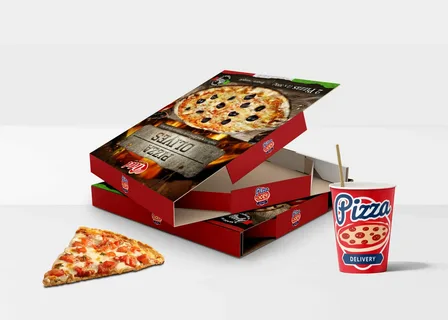To guarantee that pizza boxes hold up well—from delivery to the customer’s door—you must test their strength and durability realistically. Below are several practical methods. Each method shows different aspects of box performance under stress.
When you stack boxes or pile toppings, a pizza box must carry weight without crushing. To test load-bearing strength, you place weights gradually on a box until it deforms or collapses. Start with a mild load, such as a stack of books or sandbags, then increase the load incrementally. After each increase, inspect for warping, bending, edge failure, or seam separation. Use a ruler or caliper to measure deflection in the top surface versus its original flat shape. Repeat with several boxes to get averages and variation.
You record the maximum load the box supports without permanent damage. Also note how the failure begins—does it start at the lid, corners, seams, or flat panel? That insight helps in reinforcing weak zones. Use gradual rather than sudden load changes, because sudden loading can break in a non-representative way. This test simulates stacking in transport or storage.
It is helpful to test at different temperatures or humidity levels, because moisture softens cardboard and weakens joints. Thus a box that passes in dry lab conditions might fail in damp delivery vans. By doing the compression test under humidity (for example 60–70 % relative humidity) and ambient temperature, you get more realistic results. You may also do cyclic loading—put load, remove, then load again—to test fatigue of materials.
A pizza box must endure impacts: being dropped, thrown, or slid off a bag. To test this, you carry a filled box (with a mock pizza or weight) and drop it from controlled heights onto standard surfaces like concrete, tile, or wood. Start with a low height (say 0.5 meter) and increase stepwise to 1 m or more. After each drop, inspect the box thoroughly.
Check for tears in the side walls, lid separation, corner failures, or internal liner damage. Also check if the box maintains its shape or creases in undesirable places. Record the highest drop height where no visible damage occurs across multiple trials. Observe where the impact causes the most damage—often edges or corners.
Additionally, side-impact tests help. You push or strike the sides laterally to see if the box buckles or bursts at seams. This mimics collisions in transport or handling. For a more advanced version, you can use a pendulum impact or drop tower apparatus to standardize energy levels. Combine impact tests with loaded boxes (i.e. with weight inside) to test under realistic stress. For more details on durable and food-safe packaging solutions, you can explore https://ibexpackaging.com/pizza-boxes/ to see various pizza box options designed for performance and safety.
Pizza boxes often flex when held from one side or when placing heavy pizza slices. Flexural rigidity measures resistance to bending. To test this, clamp one edge of the box’s base panel and apply a downward force at a set distance. Alternatively, use a three-point bending fixture: support the box at two points and press in the middle.
Measure the force at which the box begins to deflect permanently. Use a load cell or weights with known mass. Also observe cracks, fiber breakage, or delamination in the board. Do this on both the lid and base, since both may bend. Repeat across multiple boxes and orientations (e.g. bending front-to-back or side-to-side).
This test reveals how rigid the box is. If it bends too easily, slices of pizza may sag or puncture the top. Combine this test with humidity or moisture exposure, because dampening can reduce stiffness. If possible, test at different temperatures to see if cold makes materials brittle. Document not just failure point, but the initial stiffness (slope of load vs deflection). That value informs whether the box feels rigid or flimsy in hand use.
Even a strong sheet can fail at its joints. You must test how well the flaps, glued seams, and folds hold together under stress. For this, prepare a series of boxes and subject their seams to peeling, shear, and tensile forces. Use a tensile tester or simple clamp and weight approach.
Peel strength test: grip the lid flap and base seam, then pull slowly to peel the glue line. Record the force at which the glue or cardboard delaminates. Shear strength: pull two joined faces laterally. Also twist or torque the lid relative to the box body to test corner seam integrity. For folding crease durability, you can repeatedly fold and unfold the flaps to simulate repeated opening and closing (fatigue). Monitor for crack formation at bend lines or weakening at the joints.
It is beneficial to do these tests after moisture exposure or temperature cycling. That reveals if the adhesive becomes weak under real delivery conditions. Good joint strength ensures the box does not separate or collapse under vertical or lateral load. Document also where failure first occurs—glue line, paper fiber, or cardboard core.
Cardboard is sensitive to moisture. A box may feel strong dry but weaken dramatically when humid or damp. To test moisture effect, expose boxes to controlled humidity (for example 85 % RH at 30 °C for 24 h) or intermittent water spray (simulate drips, condensation, or rain). After exposure, weigh the box to gauge water uptake, then rerun compression or bending tests.
Monitor how much load capacity drops after moisture exposure compared with dry baseline. Also inspect for warping, delamination, or blistering in layered board. In real life, a pizza box enters cars, basements, or humid kitchens—so boxes must retain strength under moisture. You might also test cycling: wetting, drying, repeating multiple times to simulate real use. Track cumulative damage.
You may also measure water vapor transmission rates or water absorption coefficients of cardboard. That helps predict how quickly moisture penetrates. Use standard test methods (e.g. TAPPI or ASTM standards) when possible, so you can benchmark. A box that only drops 10 % strength after humidity might be acceptable; one that loses 50 % is not.
Temperature changes can affect adhesive strength, core stiffness, and material fatigue. To test for thermal resilience, expose boxes to a cold chamber (say 0 °C or below) then a hot chamber (e.g. 45–50 °C or above) in cycles. After several cycles, test compression, bending, seam adhesion, or impact again.
Record any embrittlement, adhesive cracks, fiber delamination, warping, or loss of structural integrity. Repeated thermal cycling can cause micro-cracks or adhesive fatigue. This test is especially relevant in climates or delivery routes with temperature swings (hot day inside a vehicle, cold night outside). Boxes must survive both extremes and transitions. Note differences between lid and base behavior after cycling.
Pizza boxes may undergo repeated minor loads—opening, closing, stacking, shifting in transport. To simulate fatigue, apply small loads repeatedly (e.g. apply 2 kg load 1000 times) or flex flaps back and forth many times. Then test the same box’s strength (compression, bending, seam) to see how much degradation occurred.
Fatigue testing reveals long-term durability, not just one-time strength. Sometimes a box may handle a one-off load but crumble after repeated stress. For example, the lid hinge or side wall joints may loosen with repeated motion. Record percentage loss in strength after cycles. Also track initiation of cracks or creases. Fatigue data is useful when comparing different board types or reinforcements.
Laboratory tests are valuable, but nothing beats testing in real conditions. Arrange trials where boxes loaded with pizza (or equivalent weight) go through actual delivery routes, handling, stacking in boxes on motorbikes or cars. Collect feedback about deformation, sagging, lid separation, moisture damage, or structural failure. Encourage delivery staff to intentionally stress the box (e.g. slide them, stack irregularly, toss carefully) to reveal weak points.
Record failure modes, frequencies, and conditions. Combine this real-world data with lab tests to calibrate thresholds. For instance, if boxes frequently fail after being stacked three high in transit, make sure lab compression tests exceed that by a safety margin. This holistic testing—lab plus field—gives the most trustworthy judgment.
Testing pizza boxes for strength and durability is essential for ensuring that they perform well from the kitchen to the customer’s door. By combining compression, drop, bending, seam adhesion, moisture exposure, temperature cycling, and real-world handling tests, you get a clear picture of how a box behaves under every stress it might face. Each method reveals a different weak point, allowing you to improve materials, design, and manufacturing processes.

